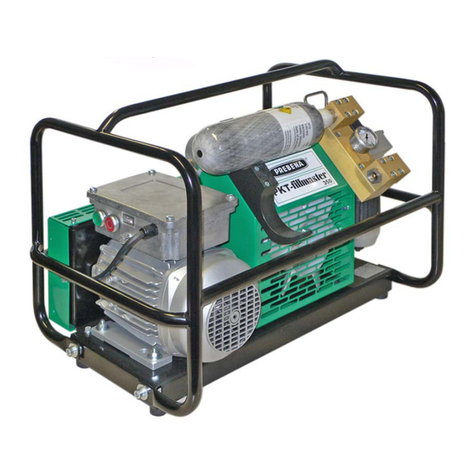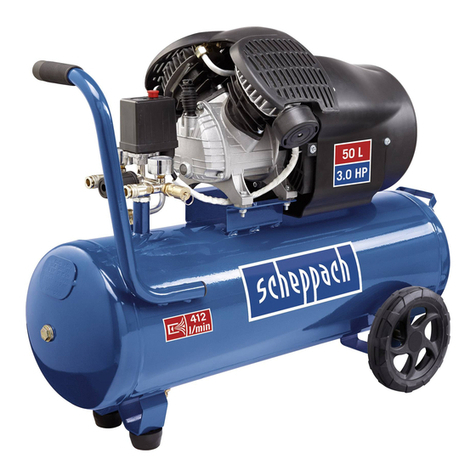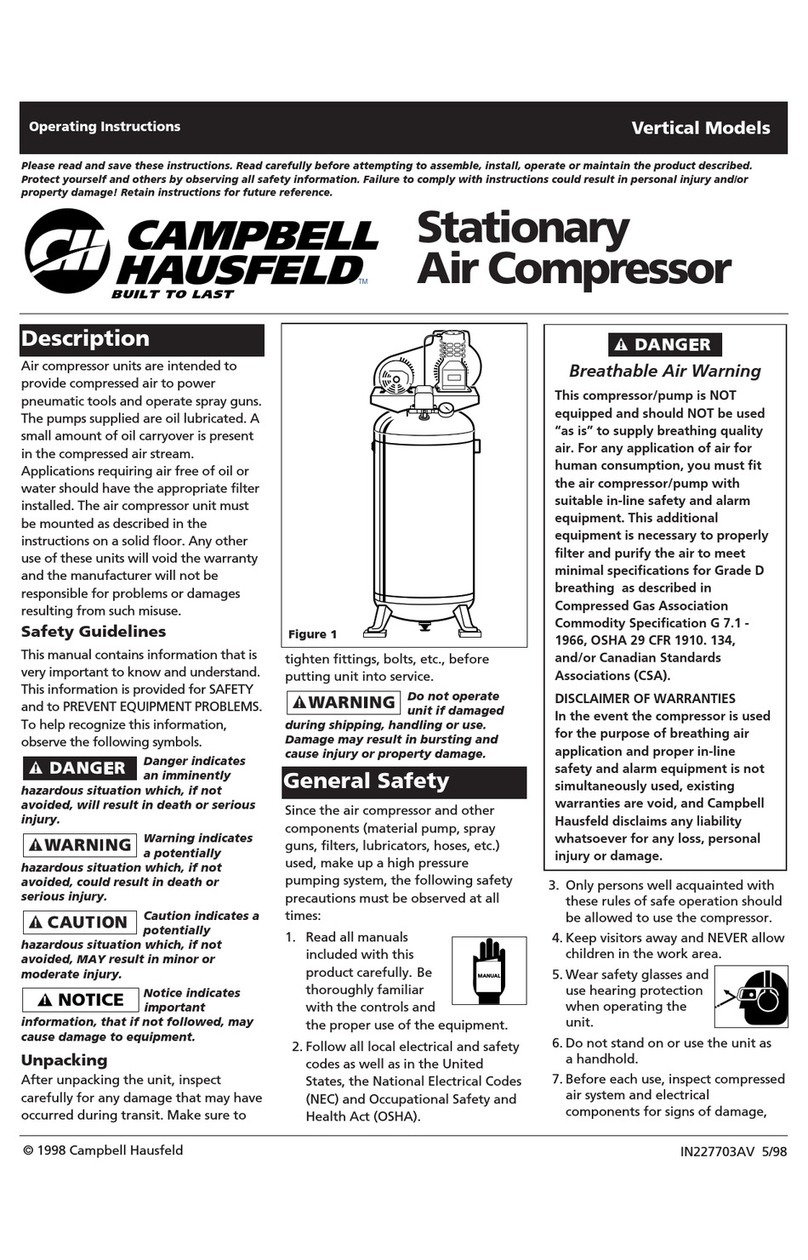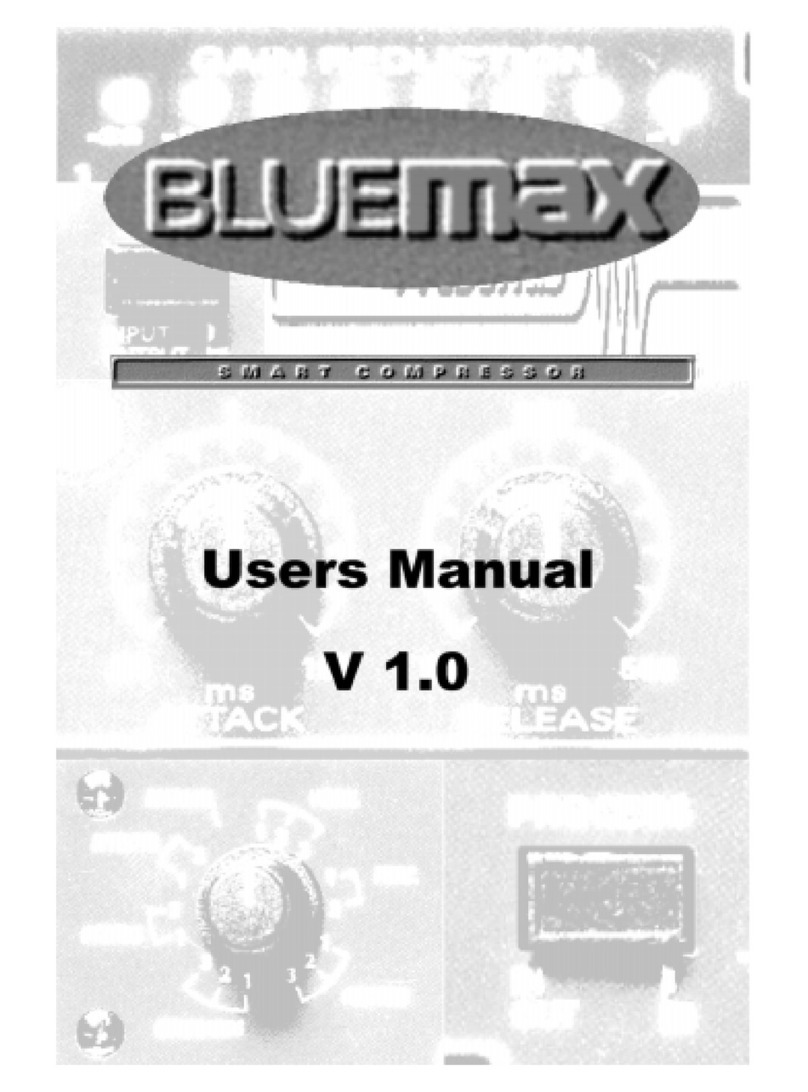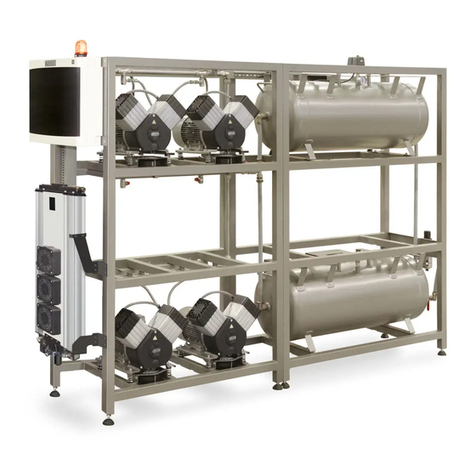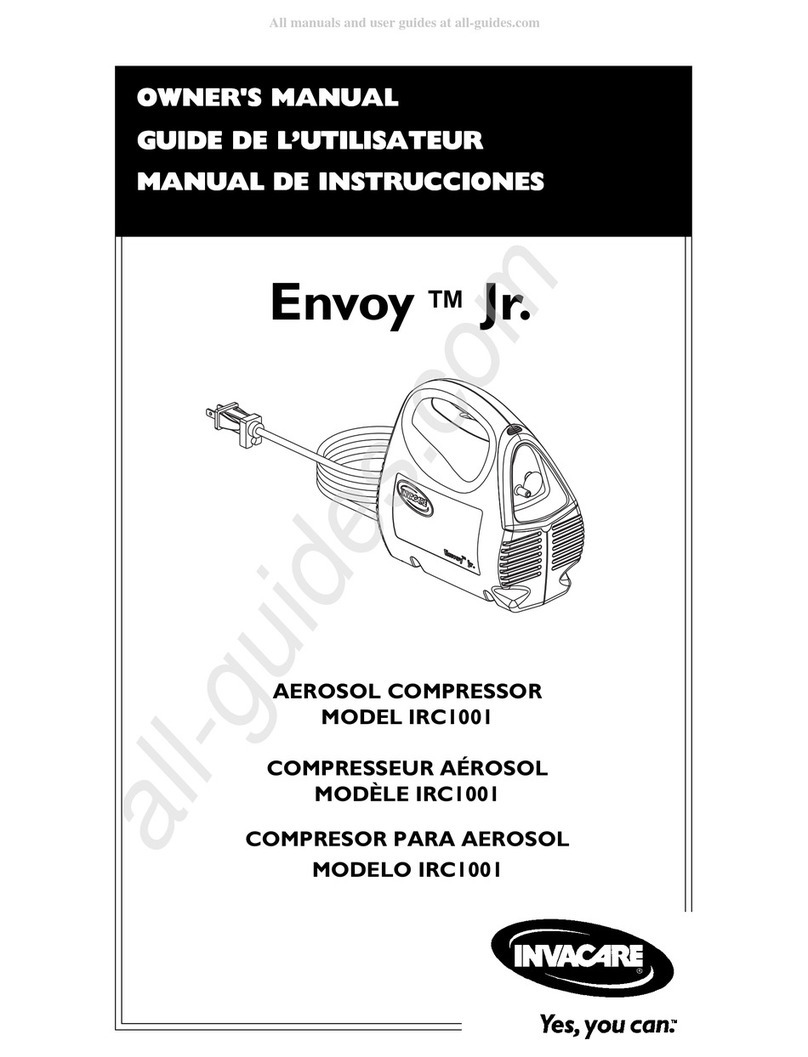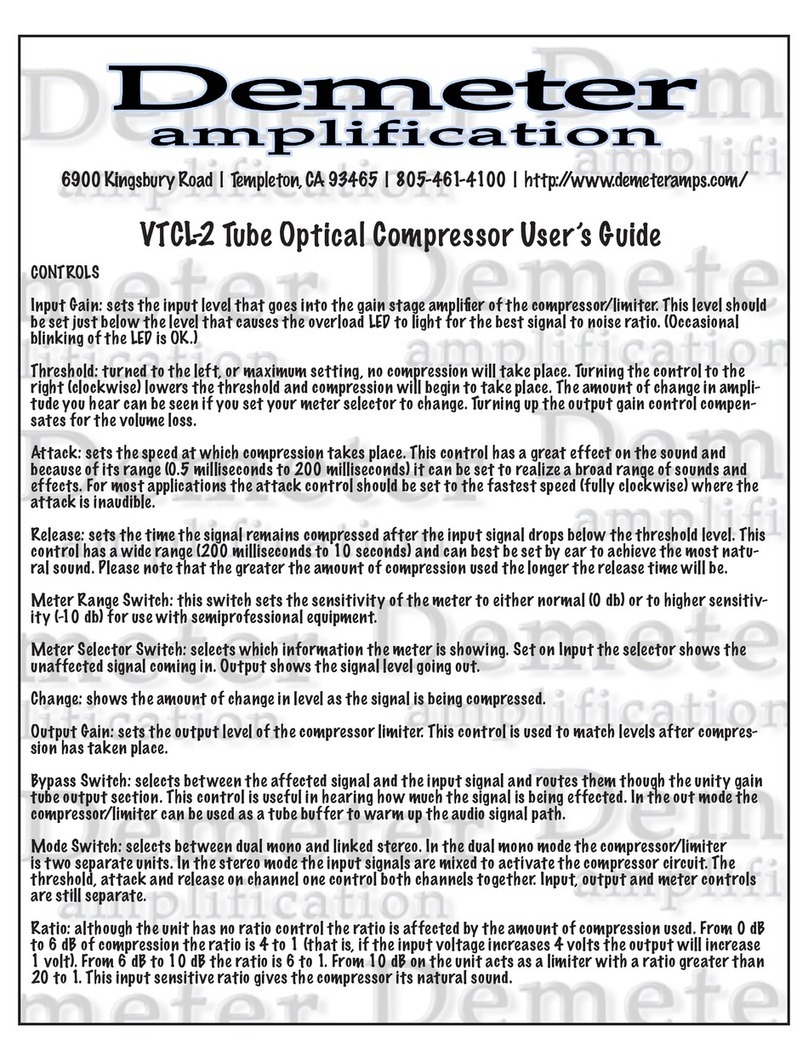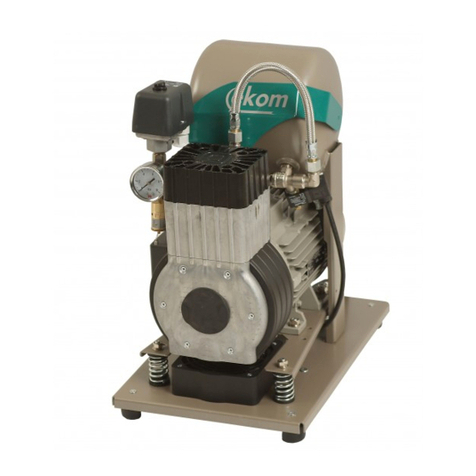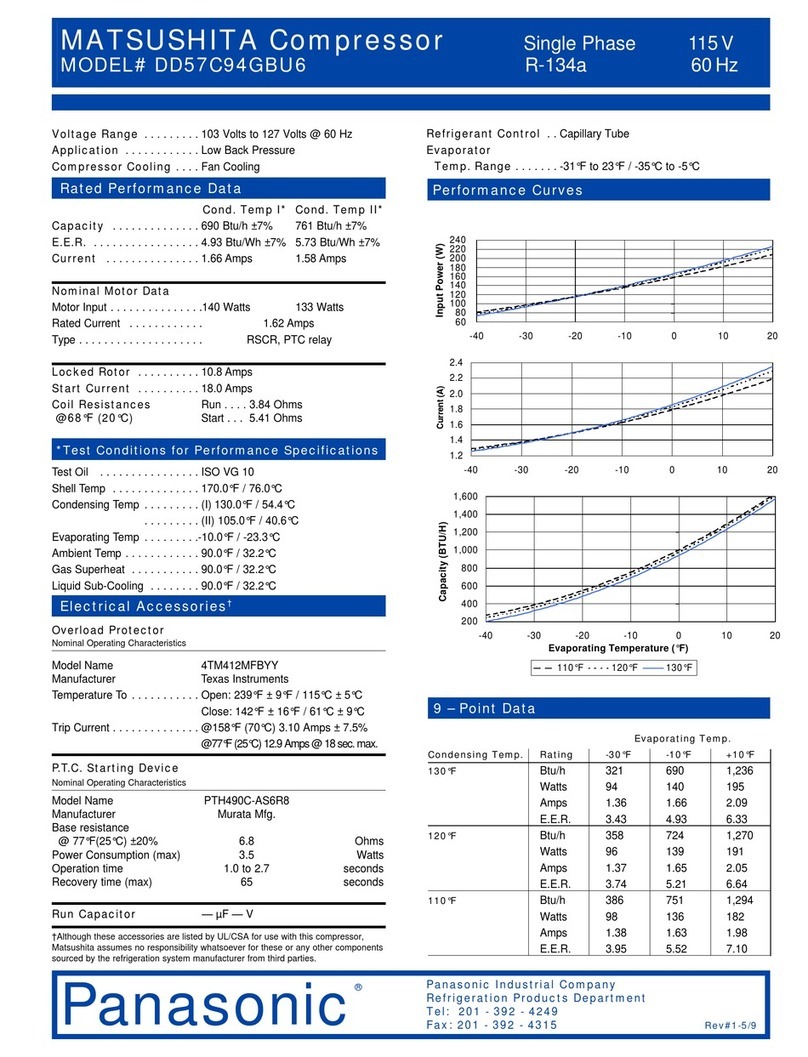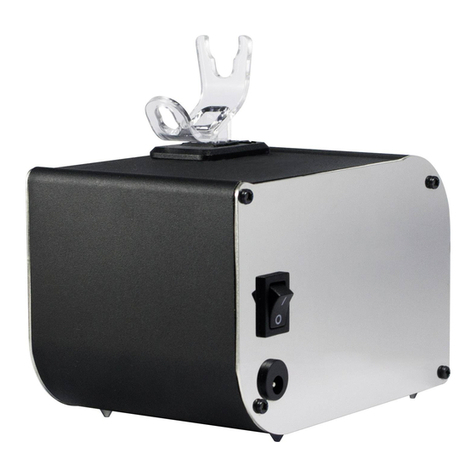
C30VR Compressor Instruction Manual
II ULVAC CRYOGENICS INCORPORATED
Section 6 Wiring and Piping Removal and Storage ············································· 6-1
6.1 Removal of wiring and piping and displacement of compressor ··················· 6-1
6.2 Maintenance in storage ······································································ 6-2
Section 7 Maintenance ················································································· 7-1
7.1 Scheduled maintenance ····································································· 7-1
7.2 Replacement of adsorber ···································································· 7-1
7.3 Adjusting system helium pressure························································· 7-5
7.4 Regular maintenance of helium lines, cooling water piping and electrical
wiring ··················································································· 7-10
7.5 Maintenance parts ··········································································· 7-10
Section 8 Troubleshooting············································································· 8-1
8.1 Problem types ·················································································· 8-1
8.2 Troubleshooting procedures ································································ 8-2
8.3 Alarm code descriptions······································································ 8-4
Appendix A Operating Log ············································································· A-1
Appendix B Combination of C30V R Compressor Unit and Cryopump/Supertrap ······ B-1
Appendix C C30V RSchematic Diagram ·························································· C-1
Appendix D C30V R Compressor Flow Diagram ················································· D-1
List of Figures
Figure 1-1 C30VR Compressor models ························································· 1-1
Figure 1-2 C30VR External view ·································································· 1-3
Figure 1-3 C30VR Front panel (Part)···························································· 1-4
Figure 1-4 C30MVR Front panel (Part) ························································· 1-4
Figure 1-5 C30VR Compressor dimensions ···················································· 1-5
Figure 1-6 Compressor front view································································· 1-7
Figure 1-7 Compressor rear view ································································· 1-8
Figure 1-8 Anchor bolts mounting positions (example) ······································ 1-9
Figure 1-9 Cryopump installation with C30MVR compressor····························· 1-12
Figure 1-10 C30VR compressor with inverter·················································· 1-13
Figure 2-1 Required space for compressor installation (scale: mm) and levelness··· 2-2
Figure 2-2 Equipment-side power circuit ························································ 2-3
Figure 2-3 Cooling water flow rate, water supply temperature, and water pressure
loss························································································ 2-5
Figure 2-4 Cooling water flow rate, water supply temperature, and water pressure
loss························································································ 2-6
Figure 2-5 Remote input interface circuit ························································ 2-8
Figure 2-6 Remote output interface circuit ······················································ 2-8
Figure 2-7 Timing chart for Alternate operating mode with two refrigerators ········· 2-12
Figure 2-8 Timing chart for Momentary operating mode with two refrigerators ······ 2-12
Figure 2-9 Signal delay when powered on(In Alternate operating mode)············ 2-13
Figure 2-10 Signal delay when the time period from a stop to a restart is short······· 2-14
Figure 2-11 Timing chart of C30VR when a short power interruption occurs ·········· 2-14
